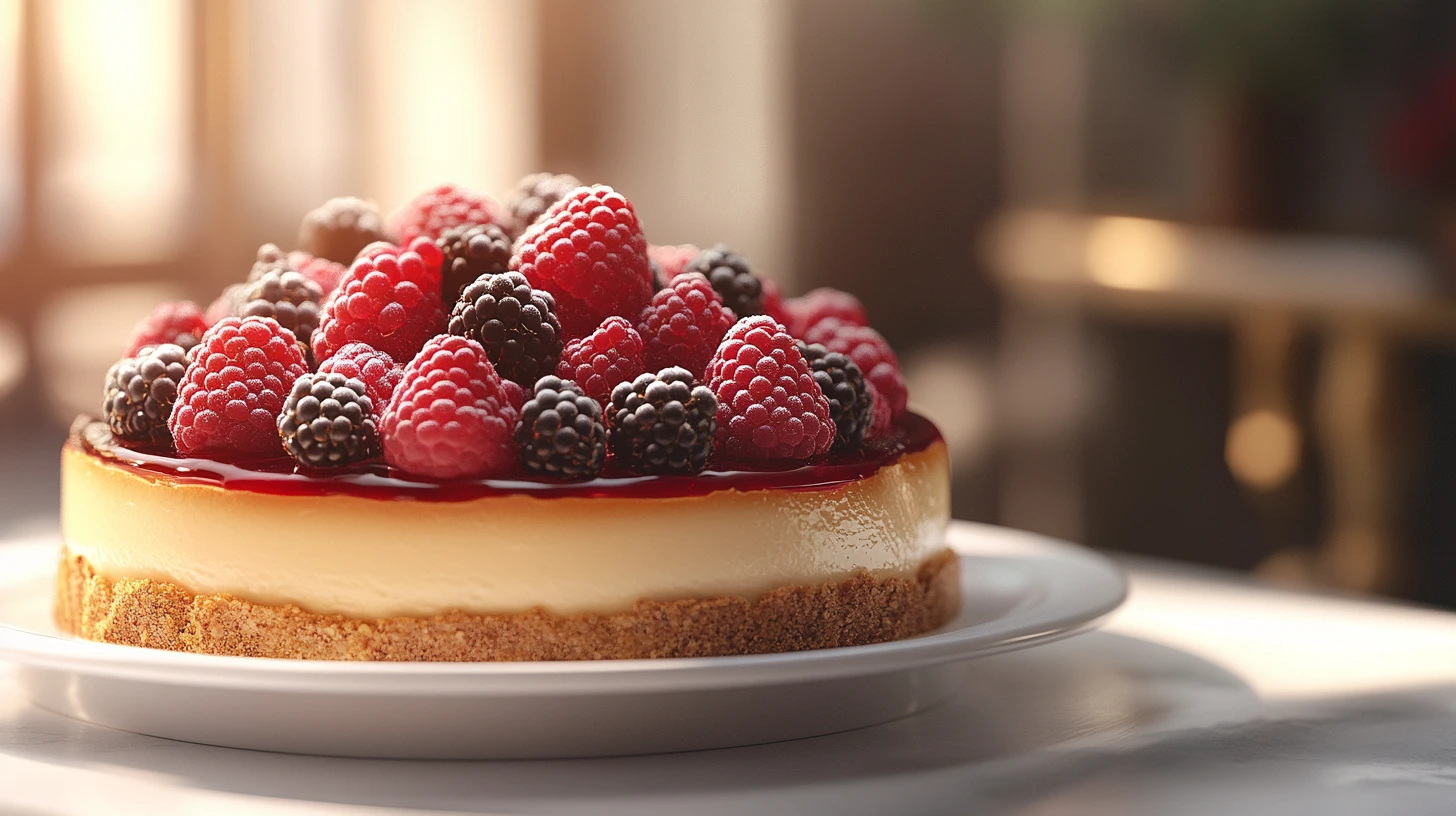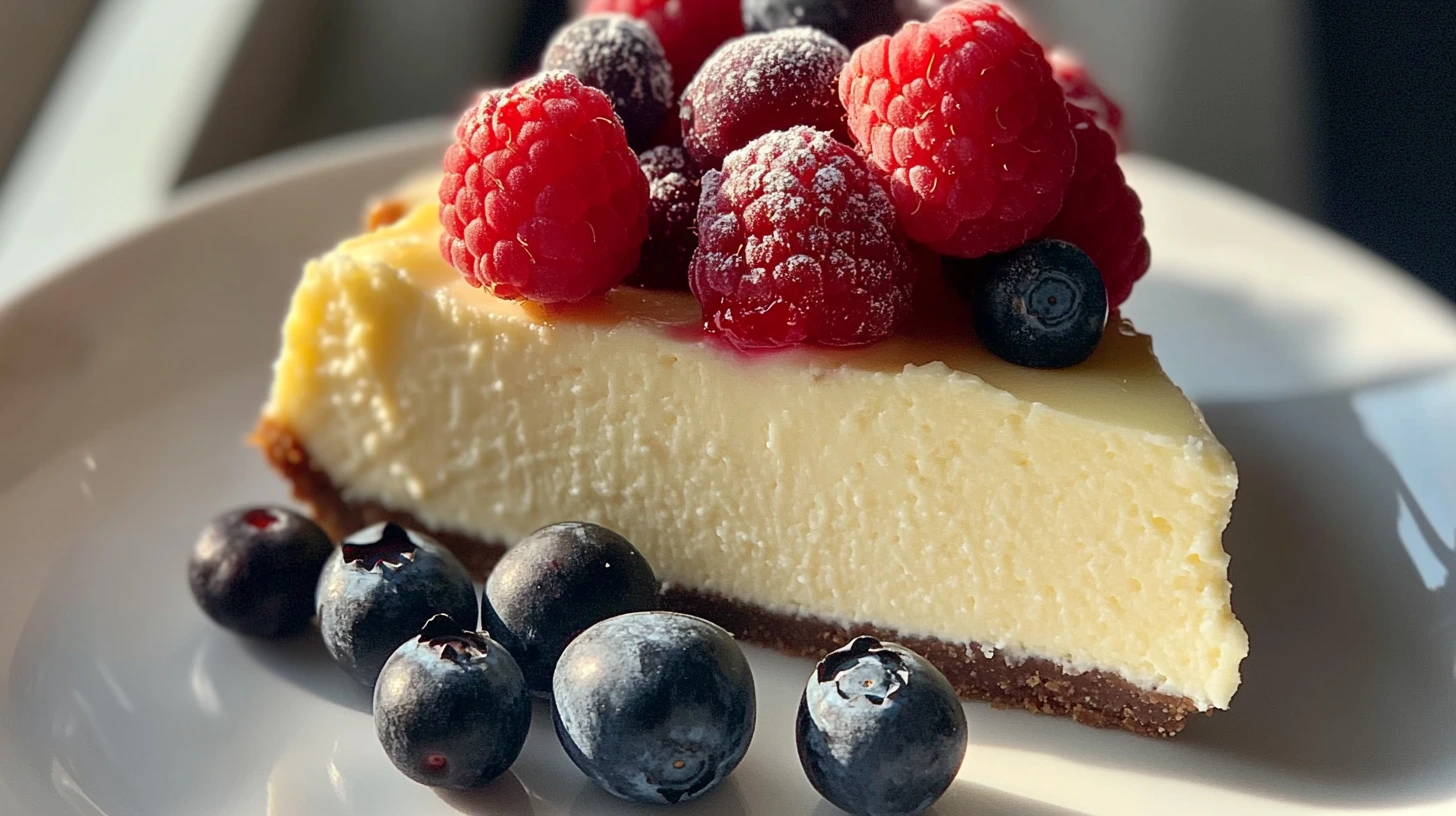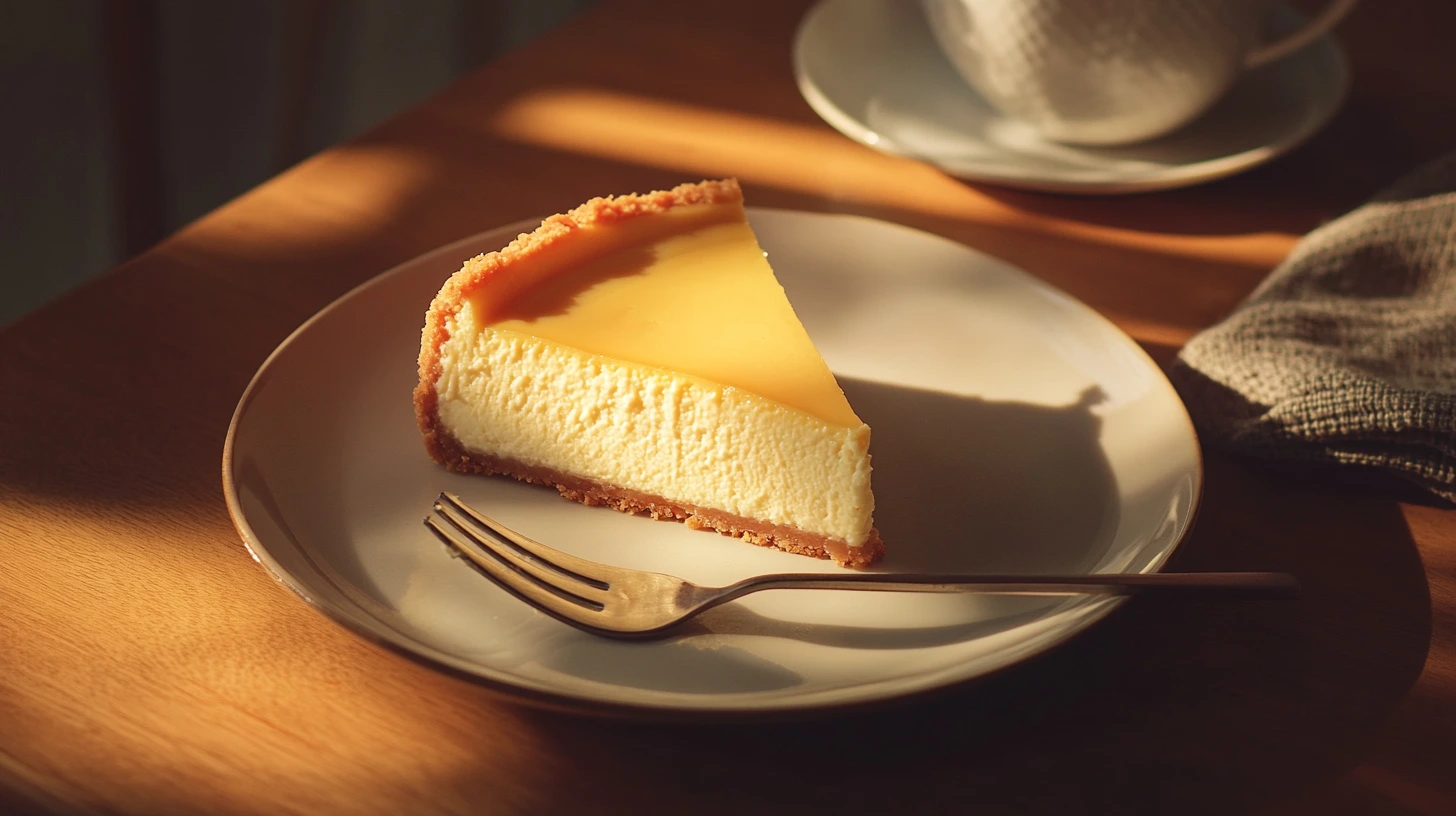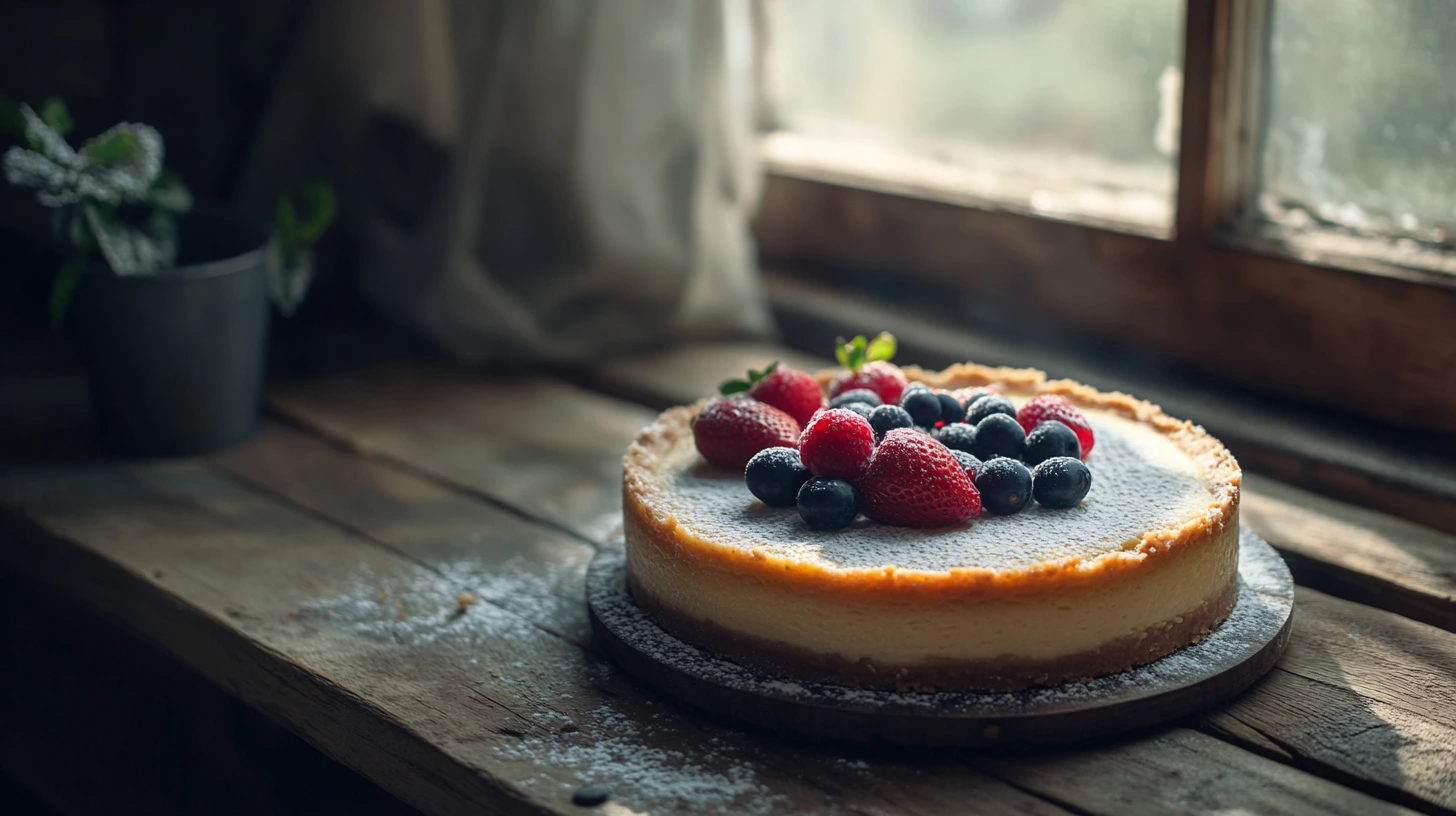What is the Difference Between New York Cheesecake and Classic Cheesecake?
Introduction to Cheesecake Varieties
New York vs classic cheesecake, is a beloved dessert with rich, creamy layers and various flavors. However, not all cheesecakes are created equal. The two most popular types—New York and classic Cheesecake—offer unique textures and ingredients that set them apart. Understanding their distinctions can help you choose (or bake) the perfect slice to suit your taste buds.
Defining New York Cheesecake
New York cheesecake is renowned for its dense, rich, and ultra-creamy texture. Unlike other cheesecakes, it achieves its signature consistency by using a higher proportion of cream cheese, eggs, and often sour cream. New York cheesecake is typically baked at a higher temperature and served with minimal toppings, allowing the pure flavor of the cake to shine.
The Traditional New York Cheesecake Recipe
A traditional New York cheesecake recipe focuses on simplicity and indulgence. The batter combines full-fat cream cheese, sugar, eggs, and heavy or sour cream. The crust is usually made of graham crackers or digestive biscuits. Once baked, the Cheesecake is left to cool gradually, resulting in a smooth and crack-free surface.
Key Characteristics of a New York Cheesecake Recipe:
- Dense and Creamy: Rich cream cheese creates a dense yet velvety texture.
- Minimal Additions: It avoids fruity fillings or elaborate toppings.
- Baked Texture: The Cheesecake is baked and allowed to set slowly for the best result.
What is New York Cheesecake?
New York cheesecake is renowned for its rich, dense, and creamy texture. This indulgent dessert features a substantial amount of cream cheese, heavy or sour cream, eggs, and sugar. Unlike lighter versions, New York-style cheesecake doesn’t shy away from bold flavors.
The batter is mixed slowly to avoid incorporating too much air, leading to its signature dense consistency. A slow bake, often in a water bath, ensures even cooking and prevents cracks.
Learn more about baking techniques in our guide to baked in a water bath.
Key Ingredients in New York Cheesecake
The hallmark of New York cheesecake lies in its carefully selected ingredients.
- Cream Cheese: The hero of the recipe, cream cheese provides richness and a smooth, creamy texture.
- Sour Cream: Often added to create a tangy flavor and silky consistency.
- Eggs: They bind the ingredients together, ensuring a firm structure.
- Heavy Cream: It adds extra creaminess and softness to the filling.
- Vanilla Extract: Used to enhance the flavor without overpowering the cheese.
The Role of Cream Cheese and Sour Cream
Cream cheese is the defining feature of New York cheesecake. Unlike classic cheesecakes that might use ricotta or mascarpone, cream cheese adds a luxurious, velvety consistency. Sour cream complements cream cheese by balancing its richness with a subtle tanginess, ensuring the flavor is not overly sweet.
Defining Classic Cheesecake
What is Classic Cheesecake?
Classic Cheesecake, sometimes called European Cheesecake, is lighter and fluffier in texture compared to its New York cousin. It often incorporates cottage cheese or ricotta cheese, which makes it less dense. Classic Cheesecake might also have additional flavorings like lemon zest or vanilla to give it a bright, refreshing taste.
The crust of a classic cheesecake can vary, ranging from a simple graham cracker base to a thin sponge cake layer.
For variations, check out this delightful mini cheesecake recipe or a fruit-infused strawberry cheesecake recipe.
Basic Ingredients in Classic Cheesecake
The Simplicity of Classic Cheesecake Recipes
Classic cheesecake recipes rely on simple, accessible ingredients to create their signature flavor and texture. These ingredients may vary depending on regional traditions and personal preferences but generally include:
- Cheese Base: Classic cheesecakes often use cream cheese, ricotta, or mascarpone, resulting in a lighter texture.
- Eggs: Eggs help bind the filling together and contribute to its structure.
- Sugar: Adds sweetness to balance the tanginess of the cheese.
- Flavorings: Vanilla extract, citrus zest, or almond essence can enhance the taste.
- Crust: A crumbly base made from graham crackers, biscuits, or pastry.
Classic Cheesecake keeps it simple, relying on these core ingredients to deliver a delicate, melt-in-your-mouth experience.
Common Variations of Classic Cheesecake
Different Ways to Make Classic Cheesecake
Classic cheesecake recipes allow for endless variations, allowing bakers to experiment with flavors, textures, and toppings. Here are some popular versions:
- No-Bake Cheesecake: This is a lighter, chilled version without eggs and baked cooking. It sits in the refrigerator, perfect for a quick and refreshing dessert.
- Italian Cheesecake: This version is made with ricotta cheese. It has a slightly grainy texture and a delicate, less sweet flavor.
- French Cheesecake: This dessert often features a blend of cream cheese and mascarpone, creating a silkier and more luxurious consistency.
- Fruit-Topped Cheesecake: Classic cheesecakes are garnished with fresh fruit, fruit compote, or jams for added flavor and visual appeal.
- Chocolate Cheesecake: Cocoa or melted chocolate is mixed into the batter, creating a rich and indulgent twist.
- Spiced Cheesecake: Incorporates cinnamon, nutmeg, or pumpkin spice for a warm, seasonal flavor.
Texture Differences New York vs classic cheesecake
Why Texture Matters in Cheesecake
Texture plays a critical role in defining the overall experience of a cheesecake. Whether you prefer a dense, creamy bite or a lighter, fluffier mouthfeel, the texture is influenced by the choice of ingredients, preparation methods, and baking techniques. Understanding the differences between New York and classic Cheesecake can help you decide which version best suits your taste.
The Dense and Creamy Texture of New York Cheesecake
What Makes the Texture of New York Cheesecake Unique?
New York cheesecake is celebrated for its dense, rich, and ultra-creamy texture. This distinct consistency is achieved through the following:
- High Cream Cheese Content: New York cheesecake uses a significant amount of full-fat cream cheese, giving it a thick, velvety finish.
- Eggs and Heavy Cream: Eggs bind the batter, while heavy cream adds smoothness and depth.
- Minimal Air: The batter is mixed carefully to avoid incorporating air, ensuring a tight, solid structure.
- High-Temperature Baking: The Cheesecake is initially baked at a higher temperature, creating a firm edge while keeping the center soft and creamy.
The result is a cheesecake that feels indulgent, smooth, and satisfying with every bite. The dense texture holds its shape beautifully, making New York cheesecake a favorite for those who enjoy decadent, heavy desserts.
The Lighter Texture of Classic Cheesecake
Why Classic Cheesecake Tends to Be Fluffier
In contrast to New York cheesecake, classic Cheesecake is known for its lighter, airier texture. This is achieved through several key factors:
- Variety of Cheeses: Classic recipes often incorporate lighter cheeses like ricotta, mascarpone, or cottage cheese, naturally creating a fluffier consistency.
- Increased Air Incorporation: The batter is typically whipped or beaten more, introducing air and producing a soft, delicate structure.
- No-Bake Options: Many classic cheesecakes are chilled instead of baked, eliminating the firmness of high-heat baking.
- Less Fat Content: The reduced use of cream cheese and heavy cream contributes to a lighter, less dense texture.
Taste and Flavor Differences
Exploring the Flavor Profiles of Both Cheesecakes
Taste and flavor are central to the cheesecake experience, and the differences between New York cheesecake and classic cheesecake lie in the richness, sweetness, and depth of their flavors. While New York cheesecake offers a bold and indulgent taste, classic Cheesecake provides a milder, more delicate flavor. Let’s explore what sets them apart.
The Richness of New York Cheesecake
How Sour Cream Enhances Flavor
New York cheesecake is known for its luxurious, rich, and tangy flavor. This richness is achieved through:
- Cream Cheese: The heavy use of full-fat cream cheese delivers a deep, creamy, and slightly tangy flavor, creating a bold and indulgent dessert.
- Sour Cream: Sour cream is a key ingredient that enhances the Cheesecake’sCheesecake’s flavor profile. It adds a tangy edge that balances the sweetness, preventing the dessert from being overly rich or cloying.
- Minimal Additions: New York cheesecake is traditionally served plain or with light toppings, allowing the natural flavor of the cream cheese and sour cream to shine.
Combining these ingredients gives New York cheesecake a decadent, satisfying taste with a perfect balance of sweet and tangy notes.
The Subtle Sweetness of Classic Cheesecake
How Simpler Ingredients Create a Milder Flavor
In contrast, classic Cheesecake is celebrating for its milder, sweeter, and lighter flavor. This subtlety comes from:
- Lighter Cheese Options: Classic cheesecake recipes often incorporate ricotta, mascarpone, or cottage cheese, which have milder flavors than cream cheese.
- More straightforward Ingredients: Without the addition of sour cream, the flavor remains sweeter and less tangy, appealing to those who prefer a more delicate dessert.
- Flavor Enhancements: Classic cheesecakes often include vanilla extract, citrus zest, or mild fruit toppings, complementing the sweetness without overpowering the cheese flavor.
- Less Fat Content: The lower fat content makes the flavor lighter and less intense, making it ideal for pairing with various toppings like fruit compote or whipped cream.
The Cultural Origins of New York vs classic cheesecake
How History Shaped These Cheesecake Varieties
In its many forms, Cheesecake has a rich and diverse history that reflects cultural traditions and evolving tastes. While New York cheesecake represents the modern indulgence of American culinary innovation, classic Cheesecake has evolved across cultures, adapting to regional ingredients and flavors. Let’s explore the origins and global influence of both varieties.
New York’s Influence on Cheesecake Culture
Why New York Cheesecake Became a Global Staple
New York cheesecake rose to fame in the early 20th century, particularly in New York City, where cream cheese became a defining ingredient. Several factors contributed to its cultural significance and worldwide popularity:
- The Rise of Cream Cheese: In the 1870s, American dairyman William Lawrence perfected cream cheese, a rich, smooth product that became the foundation for New York-style cheesecake. Its luxurious texture sets it apart from traditional European versions.
- Culinary Innovators: New York restaurateurs like Arnold Reuben are credited with popularizing this iconic dessert. Reuben’s focus on simplicity—using cream cheese, eggs, and sour cream—led to a dense, rich cheesecake loved by many.
- Urban Popularity: Cheesecake became synonymous with New York’s vibrant food culture, served in famous establishments like Junior’s, which solidified its status as a quintessential New York dessert.
- Global Spread: As New York City became a hub for international travel and food trends, New York cheesecake spread worldwide, celebrated for its indulgent texture and tangy flavor.
New York Cheesecake’s bold, creamy identity reflects the city’s dynamic and innovative food culture, making it a global dessert staple.
Classic Cheesecake’s Evolution Across Cultures
How Classic Cheesecake Became Popular Worldwide
Classic Cheesecake has roots that can be traced back thousands of years, evolving across continents as it adapted to local culinary traditions:
- Ancient Origins: The earliest known cheesecake dates back to ancient Greece, where a simple mixture of cheese, honey, and wheat was baked to honor athletes during the Olympic Games.
- Roman Influence: The Romans adopted the Greek recipe, spreading it across Europe during their conquests. Cheesecake became a staple in European kitchens, where it evolved to include regional cheeses like ricotta in Italy and quark in Germany.
- European Adaptations:
- Italian Cheesecake: Made with ricotta cheese for a lighter texture.
- French Cheesecake Often features mascarpone for a smooth and refined flavor.
- German Käsekuchen: Uses quark, a tangy cheese, and a thin crust.
- Global Popularity: With European migration, classic cheesecake recipes were brought to new continents, where they were further adapting using local ingredients and flavors, such as cream cheese in America or fruits in Asia.
- Versatile Nature: The simplicity of classic Cheesecake allowed bakers worldwide to incorporate local flavors—such as mango in India, matcha in Japan, and dulce de leche in Latin America—making it an adaptable and universally loved dessert.
Why Do People Prefer One Over the Other?
Which Cheesecake is Right for You?
- If you crave a decadent dessert that’s rich and creamy, the New York cheesecake is the way to go. Try complementing it with toppings like chocolate ganache, or explore this chocolate cheesecake recipe for a twist.
- Classic Cheesecake is ideal for brunch or summer desserts. For a lighter option, add fruit toppings like raspberries or strawberries for extra flair.
The Richness and Comfort of New York Cheesecake
Why Some Prefer the Heavier Texture
New York cheesecake is the ultimate dessert for those seeking a decadent, indulgent experience. Its dense, creamy texture and bold flavor make it a comforting and satisfying treat. Here’s why some people love it:
- An Indulgent Treat: The richness of cream cheese and the tang of sour cream create a full-bodied flavor that feels luxurious and special.
- Satisfying Texture: The dense, creamy texture provides a hearty mouthfeel, making it perfect for those who enjoy desserts with substance.
- Pure and Simple: New York cheesecake is often serving plain or with minimal toppings, allowing the focus to remain on its creamy, rich flavor.
- Celebratory Dessert: Its indulgent nature makes it ideal for special occasions or as a centerpiece dessert that impresses.
For lovers of bold flavors and satisfying textures, New York cheesecake delivers a comforting, classic indulgence that feels like a true treat.
The Lightness and Simplicity of Classic Cheesecake
Why Classic Cheesecake Appeals to Minimalists
With its lighter texture and subtler flavors, classic cheesecake appeals to those who prefer a more straightforward and versatile dessert. Here’s why it’s a favorite for many:
- Delicate and Light: The fluffier texture makes it feel less heavy, offering a refreshing and easy-to-enjoy dessert experience.
- Subtle Sweetness: Classic Cheesecake has a milder sweetness, often enhanced with gentle flavorings like vanilla or citrus zest, making it less overwhelming.
- Versatility: Its lighter base pairs beautifully with various toppings, from fresh fruit to chocolate drizzles, allowing creative customization.
- Everyday Appeal: Classic Cheesecake feels less indulgent, perfect for casual occasions, lighter meals, or those who enjoy a less intense dessert.
FAQs: New York vs classic cheesecake
Common Questions on New York vs. Classic Cheesecake
Cheesecake enthusiasts often wonder how to modify recipes, serve their cheesecakes, or choose between New York and classic styles. Here are answers to some of the most frequently asked questions about these popular cheesecake varieties.
Can I Substitute Ingredients in New York Cheesecake?
How to Modify New York Cheesecake for Dietary Needs
Yes, you can make substitutions in New York cheesecake to accommodate dietary preferences or restrictions:
- Cream Cheese Alternatives: Replace full-fat cream cheese with low-fat or vegan cream cheese for a lighter or plant-based version.
- Egg Substitutes: For an egg-free option, use flax eggs (1 tablespoon flaxseed + 3 tablespoons water per egg) or commercial egg replacers.
- Sour Cream Substitutes: Swap sour cream with Greek yogurt or coconut cream for a tangy, healthier alternative.
- Sweetener Substitutes: To reduce sugar content, use natural sweeteners like honey, maple syrup, or sugar alternatives (e.g., stevia or erythritol).
While substitutions can work, they may slightly alter the texture or flavor of traditional New York cheesecake.
Is New York Cheesecake Healthier than Classic Cheesecake?
Comparing Nutritional Information
New York cheesecake is typically higher in calories, fat, and sugar due to its rich ingredients like cream cheese, heavy cream, and sour cream. Classic Cheesecake, especially versions made with ricotta or cottage cheese, tends to be lower in fat and calories.
- New York Cheesecake: Rich, creamy, and indulgent, with more calories per slice (around 450-500 kcal).
- Classic Cheesecake: Lighter in texture and ingredients, often containing fewer calories (around 300-400 kcal per slice).
Healthier Options
For those looking for a lighter version of Cheesecake, this healthy cheesecake recipe is perfect. It’s perfect for guilt-free indulgence.
Can I Make Classic Cheesecake Without a Crust?
Is It Possible to Skip the Crust in Classic Cheesecake?
Yes, you can make classic Cheesecake without a crust. The filling can baking in a well-greased pan or lined with parchment paper. Here are some tips:
- Use a springform pan to release the Cheesecake quickly after baking.
- To prevent sticking, lightly grease the sides and bottom or line the pan with parchment paper.
- The texture of a crustless cheesecake will be smooth and creamy, with no distraction from the filling.
Crustless classic cheesecakes are ideal for those avoiding gluten or looking for a simpler version of this dessert.
Which Cheesecake is Better for Beginners?
Which One is Easier to Make?
Classic Cheesecake is generally more manageable for beginners due to its:
- More straightforward Ingredients: Recipes often call for fewer and lighter ingredients.
- Versatile Techniques: Many classic cheesecakes are no-bake, eliminating the challenge of baking and cooling.
- Forgiving Nature: Classic cheesecake recipes are less sensitive to temperature and mixing methods.
New York cheesecake requires precise measurements, careful mixing to avoid air bubbles, and a controlled baking process to prevent cracks. Beginners may find classic Cheesecake a better starting point.
What is the Best Way to Serve These Cheesecakes?
Serving Suggestions for Both Cheesecakes
- New York Cheesecake: Serve plain or with a drizzle of fruit coulis, caramel, or chocolate sauce to complement its rich texture. Avoid heavy toppings that might overwhelm the cake.
- Classic Cheesecake: Pair with fresh fruit, whipped cream, or preserves. Classic Cheesecake’s lighter texture works well with bolder toppings like berry compote, citrus zest, or a dusting of cocoa powder.
For best results, serve both cheesecakes chilled, enhancing their creamy texture and flavor. Allow them to sit at room temperature for 10-15 minutes before serving.
How Can I Add Flavors to My Cheesecake?
Adding Toppings and Flavors to Enhance Cheesecake
Cheesecake is incredibly versatile when it comes to flavor additions:
- Mix-In Flavors: Add ingredients like melted chocolate, citrus zest, vanilla bean paste, or spices (e.g., cinnamon, nutmeg) directly to the batter.
- Toppings: To enhance the flavor and presentation, use fresh fruit, fruit sauces, chocolate ganache, caramel drizzle, or whipped cream.
- Crust Variations: To add new dimensions of flavor, swap the graham cracker crust for an Oreo, digestive biscuit, or almond-based crust.
- Layered Cheesecakes: For extra variety, add a thin layer of jam, ganache, or flavored mousse between the crust and filling.
Conclusion: New York vs classic cheesecake
Both New York cheesecake and classic Cheesecake offer their unique flavors and textures. Whether you prefer the luxurious richness of New York style or the delicate lightness of classic Cheesecake, there’s a perfect recipe for everyone. Discover more cheesecake variations, including the crowd-pleasing peanut butter cheesecake recipe, and enjoy exploring these delicious treats.




